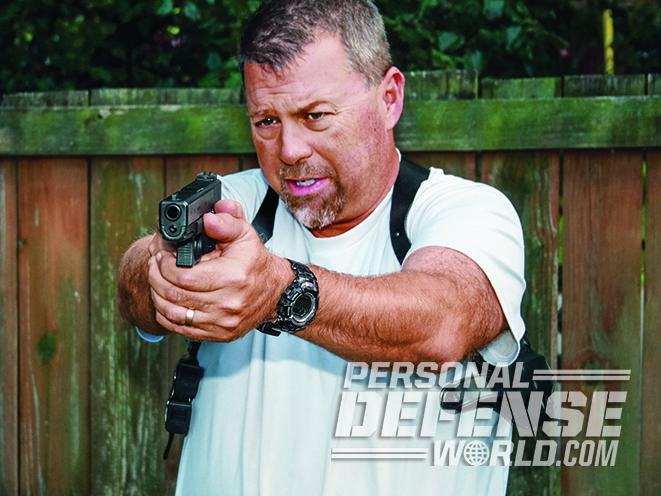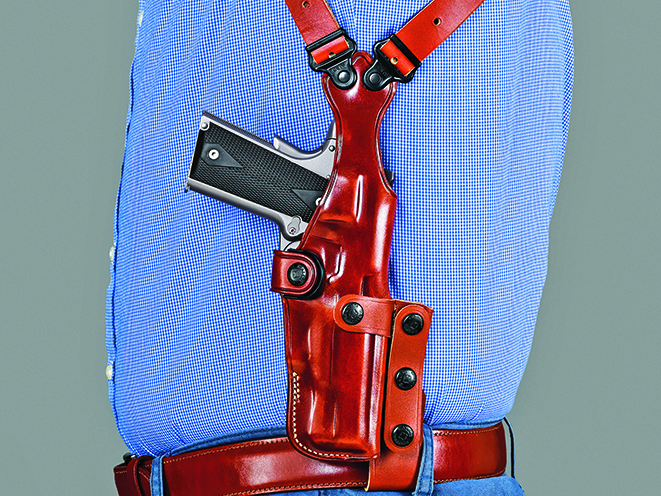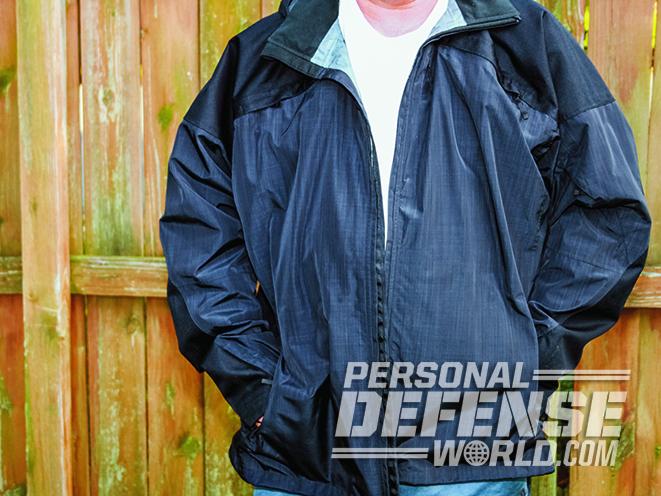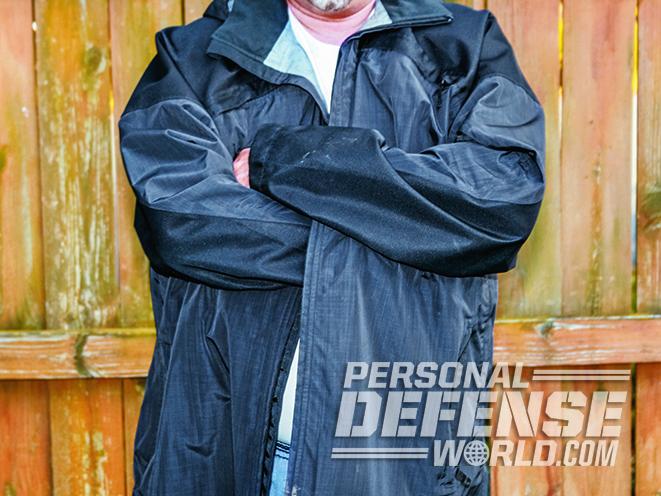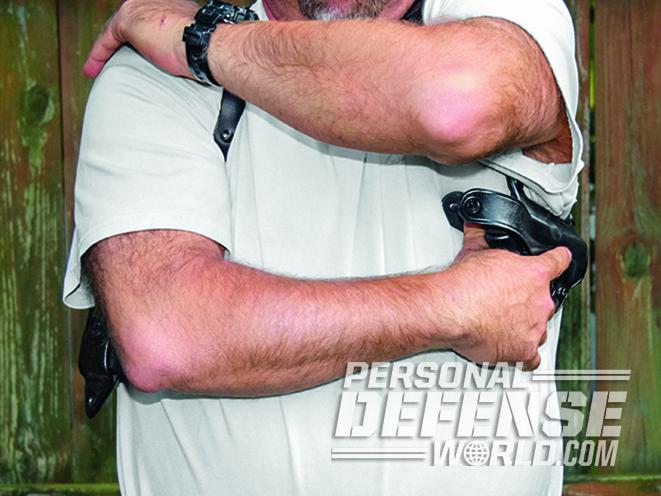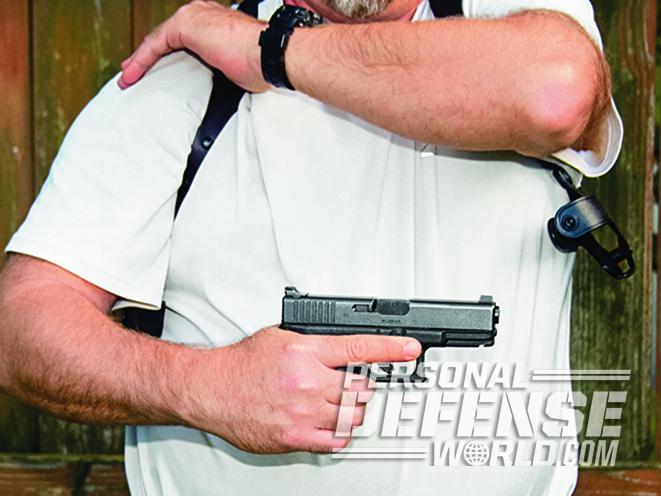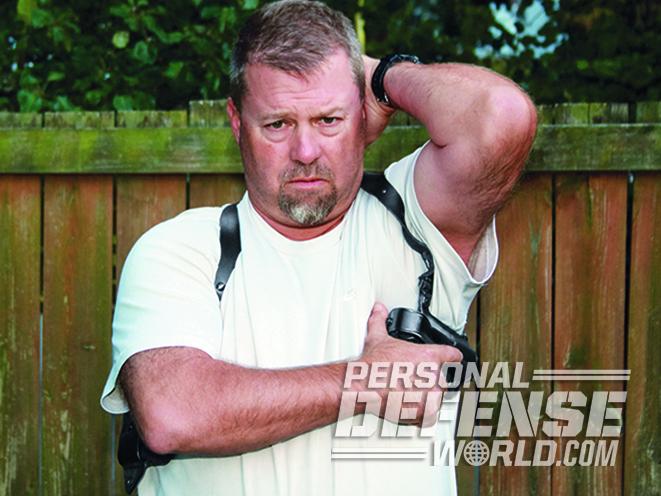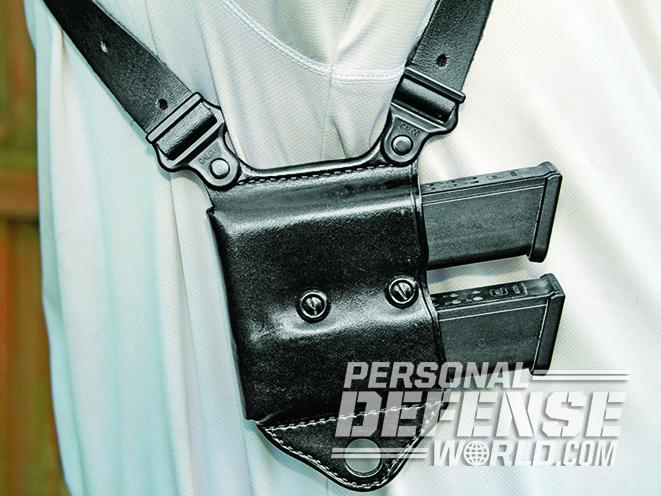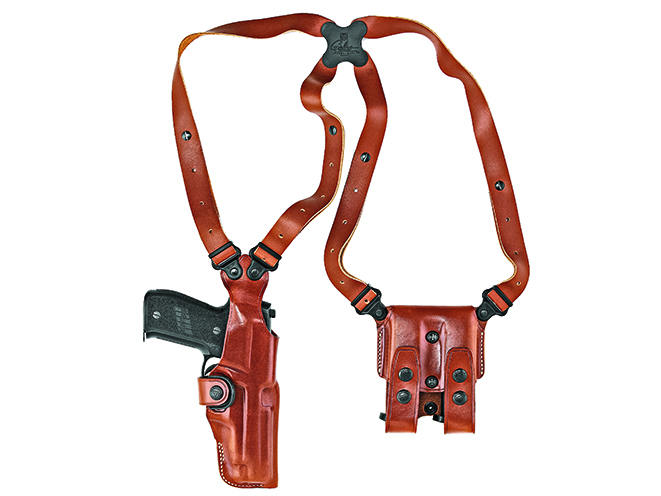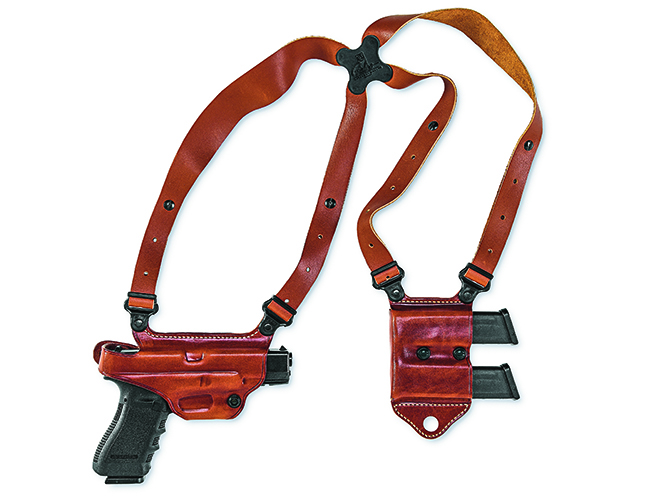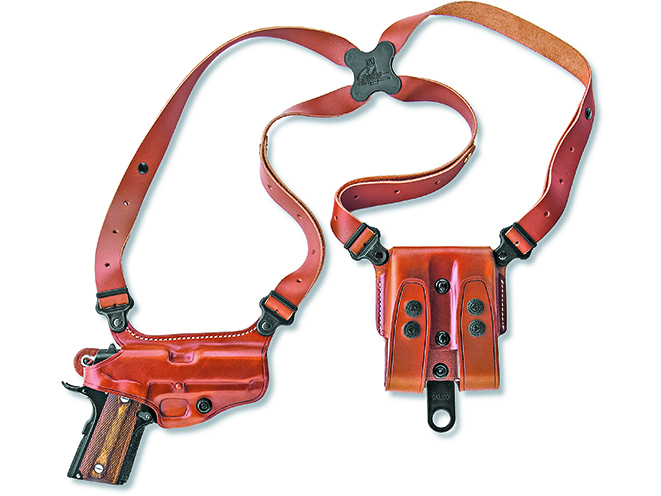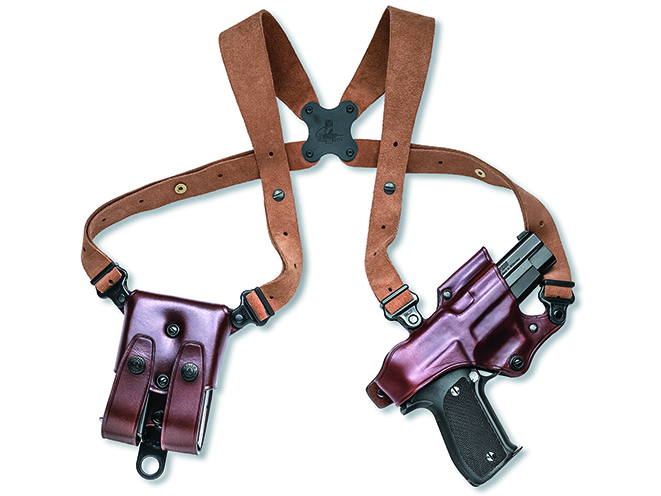The importance of holster selection is often overlooked, especially in terms of effective concealed carry. And if you’re a gun enthusiast like you, you probably have boxes full of the holsters you’ve collected over the years. This variety spawned from different moods, changing handguns or imagined needs and tasks that needed to be fulfilled. But this whimsical attitude changes when someone commits to being a serious concealed-carry practitioner.
Holsters cannot be chosen lackadaisically or thought of as merely expendable accessories when considered for concealed carry. A holster is one part of an entire system that includes the weapon, sights, ammunition, training and shooter’s mindset. Any deficiency in one part of the system will impact your efficiency as a whole. The adaptability and relative ease of changing/alternating holsters leads many to minimize their importance. In other words, in terms of concealed carry, holster selection warrants the same serious consideration as you’d use to select a weapon itself.
An often-overlooked option is the shoulder holster. Shoulder rigs shouldn’t be relegated to TV shows and movies. I’ve often seen or heard some form or condescension or another when it comes to utilizing shoulder holsters. Much of this stems from some trainers, competitions or ranges prohibiting patrons from using shoulder holsters due to the muzzle orientation when carried or drawn. This is understandable. But you have to realize what drives this and delve deeper into this methodology.
Advertisement — Continue Reading Below
Using Shoulder Holsters

Holsters are obviously important for carrying one’s weapon securely, discreetly and comfortably while offering relatively quick access. The shoulder holster does all of these things within certain parameters. But let me be clear: I am not advocating a shoulder holster for every situation, nor am I stating that you can forget belt, pocket, ankle, appendix or inside-the-waistband (IWB) holsters—just that shoulder holsters have a place in concealed carry.
Every method of concealed carry poses challenges. But in terms of comfort, it’s hard to argue against the shoulder holster. The harness is draped over and supported by the shooter’s shoulders and upper back. This compares favorably to belt carry, which places a certain amount wear and tear on the lower back. Concealed-carry practitioners with back issues or smaller waists will appreciate the shoulder holster’s weight distribution. Obviously, you have to pair a cover garment such a jacket, coat or over-shirt with a shoulder holster. The same can be said of other holster types.
- RELATED STORY: 11 of the Best Appendix Carry Rigs Out There Right Now
Shoulder holsters typically have double magazine pouches counter-balancing the handgun found on the other side of the harness. Typically, only one spare magazine is associated with belt carry, especially with high-capacity, double-stack magazines. What is missed at times is that the magazine pouch requires just as much thought for concealment as the firearm. But in this regard, a shoulder holster can more easily accommodate a larger handgun as well as two extra magazines. Full-sized Glocks and 1911s pose no problem here. This article is not just a theoretical exercise. I have used Galco’s Miami Classic II and Jackass shoulder holsters for years.
Advertisement — Continue Reading Below
The shoulder holster harness is simply slipped over your arms and placed behind your neck for proper positioning. You don’t have to worry about wearing a sturdy belt or threading one through loops—something very important for belt carry. Instead, the shoulder holster keeps your weapon and spare magazines all in one handy package. You can simply throw on a shoulder holster when you’re in a hurry. Pants aren’t even critical. I mention this not to be crass but rather reinforce how easy it is to place a shoulder rig close by when you’re in your home, a hotel if you’re traveling or other scenarios and then don it quickly, ensuring your weapon and spare magazines are present.
Another example of a shoulder holster’s convenience—compared to a belt loaded with a holster and magazine pouches—comes when it’s time to use the bathroom. Sure, of course this sounds funny, but until you’ve actually carried a handgun concealed for a long time, you won’t understand how difficult and/or time consuming doffing and donning your weapon can be, especially if you have to use a public restroom. Shoulder holsters, held higher on the torso and entirely independent of your waist belt, pose no such issues.
What About Speed?

An oft-cited negative associated with shoulder holsters is their slower draw times compared to carry methods near your waist. This is understandable, as you have to reach up and across your body to draw your pistol. But a fast draw time is rarely a deciding factor in a real-world encounter. I contend that situational awareness is more important. Also, a shoulder holster practitioner can be much more discreet in prepping his or her hand on the firearm when sensing a situation is about to turn south. Imagine how natural-looking it is to just cross your arms—but in reality you’re getting a firm fix on your pistol’s grip while keeping an eye on the threat.
Advertisement — Continue Reading Below
Your presentation or drawstroke hinges on your holster choice. A deep-cover holster maximizes concealment but can be detrimental to a smooth presentation. Whether the gun is positioned vertically or horizontally, the shoulder holster places the weapon’s butt in an ideal position for a proper firing grip. Many highly acclaimed personal-defense trainers agree that acquiring a proper grip during the drawstroke is crucial to placing rounds on target quickly, efficiently and accurately. Along these same lines, the shoulder holster can be easily accessed when sitting or driving—typically something most of us do a lot during the day. Getting smooth access to a strong-side belt holster can be problematic when you’re sitting in a car or chair. This is why many shoulder holster advocates are drivers, private security contractors or office workers.
Galco’s Greats

The Galco Jackass and Miami Classic II shoulder holsters are great examples of the genre. Each Galco rig holds your pistol horizontally, though the Jackass can be adjusted to offer a more diagonal cant if so desired. Both also offer double magazine pouches opposite the handgun. But these shoulder holsters are also modular in nature, allowing concealed-carry practitioners to add tie-downs and flashlight pouches, for example, and adjust the magazine pouch’s orientation or even double up and create a dual carry rig with handguns placed under each arm. These Galco rigs use premium leather, allowing for greater adjustments and comfort. All four points of the harness can pivot independently and are connected by Galco’s trademark clover-shaped Flexalon back plate.
The harnesses have numerous adjustment points to accommodate chests up to 52 inches wide. Of course, it’s advisable to spent some time making sure your shoulder holster fits properly. A common mistake is to leave your shoulder rig too loose or droopy under your arms. Having the magazine pouch and holster high under your arms keeps them from bouncing around while you’re moving. More importantly, this simplifies releasing the retention straps and drawing your weapon smoothly, versus chasing your handgun rearward if the rig is too loose and dangling under your arm.
Advertisement — Continue Reading Below
Better Training

Like any carry method, it’s important to practice deploying your handgun smoothly. Due to the way your handgun is oriented with a shoulder rig, it’s best to use a private training location for this kind of practice, especially with horizontal holsters. Also, be mindful that your own arm will be muzzled during the drawstroke unless you lift it. Different techniques consist of raising your elbow to guard your head or reaching your arm across your torso in a cross-guard position. The latter is my preference for various reasons, including discreetness and increased retention.
It’s safe to say that draw times from shoulder holsters are comparably slower than drawing from a strong-side belt or appendix holster. The same can be said for reloads, as you’ll have to reach across your torso to remove a fresh magazine. However, as I’ve already mentioned, pure time comparisons are nebulous in terms of deciding if the method is viable or not.
CCW practitioners need to be flexible in terms of carry methods in order to maximize their self-defense for all possible environments and situations. In an ideal world, we wouldn’t have to think about carrying a handgun for personal defense. But we all agree that this isn’t the case. Thinking one holster type, or even weapon, is all you need for effective concealed carry is idealistic. While making a strong case for shoulder holsters to get my point across in this article, do not confuse this as advocating shoulder holsters as the answer to all concealed-carry needs. Frankly, belt holsters, especially IWB types, are hard to beat for the majority of situations. However, shoulder holsters have a positive and larger role in augmenting concealed carry than most give them credit for.
Advertisement — Continue Reading Below
